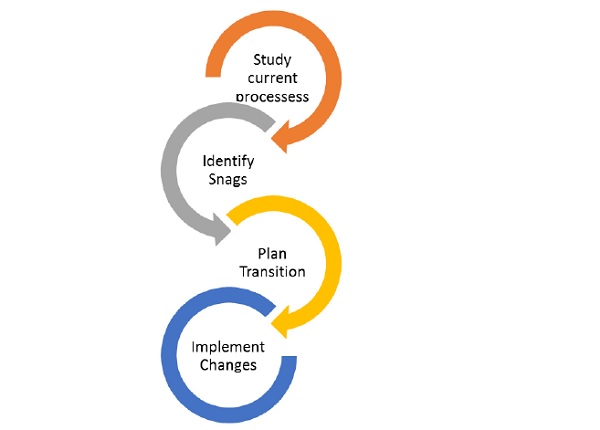Organizational change often, if not always, is an indicator of potential problems or issues with the organization. In some cases, however, voluntary changes happen in forward looking organizations that proactively recognize potential opportunities or situations.
Whatever the case, change is a shift from the current comfort state for any organization and needs to be well planned so as to not imbalance the current environment. Key steps in the process of implementing a planned organizational change is depicted in the following figure.
Organizations need to undertake thorough study to understand the existing processes and procedures, and identify the snags. Each problem area has to be evaluated and the changes required for improvement have to be assessed.

The next step is to determine the desired future state the management wishes the organization to be in. This will need to be communicated to all concerned and design the means of smooth transition.
The transition plan once finalized has to be implemented in an orderly manner. Plans have to be made and resources need to be allocated. Responsibility has to be assigned to a key person in the organization to take charge of the change process. It is essential for the top management to beinvolved in the whole process to direct and govern the process.


